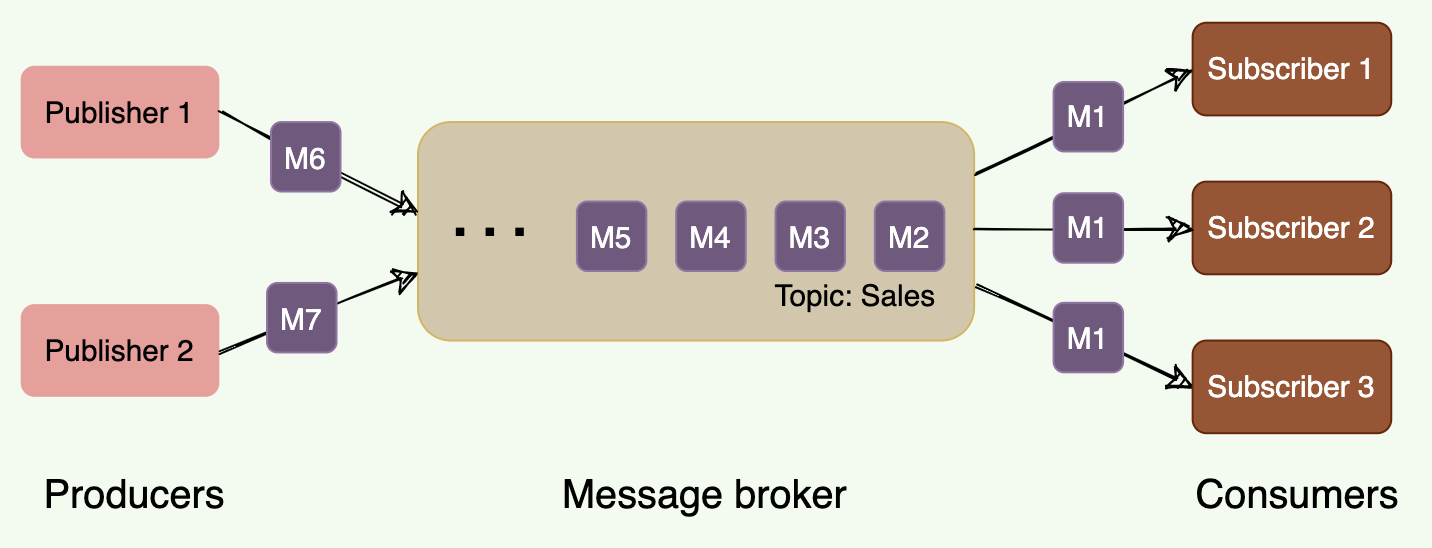In the pub-sub (short for publish-subscribe) model, messages are divided into topics. A publisher (or a producer) sends a message to a topic that gets stored in the messaging system under that topic. Subscribers (or the consumer) subscribe to a topic to receive every message published to that topic. Unlike the Queuing model, the pub-sub model allows multiple consumers to get the same message; if two consumers subscribe to the same topic, they will receive all messages published to that topic.
The messaging system that stores and maintains the messages is commonly known as the message broker. It provides a loose coupling between publishers and subscribers, or producers and consumers of data.
The message broker stores published messages in a queue, and subscribers read them from the queue. Hence, subscribers and publishers do not have to be synchronized. This loose coupling enables subscribers and publishers to read and write messages at different rates.
The messaging system’s ability to store messages provides fault tolerance, so messages do not get lost between the time they are produced and the time they are consumed.
